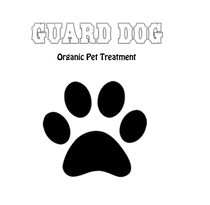· By Harvest Growth
Helping Your Dog Cope with Separation Anxiety: Training Tips & Techniques
My little Jolene loves her snuggle time. She’s always got to be on a lap or by a side, which can make home workouts difficult—and leaving the apartment an emotional trauma for both human and dog. Down the hall, around the corner, even as I’m entering the parking garage, I can hear poor Miss Jo whimpering by the door. We’ve tried giving treats, crating, and everything in between. And as we begin to get to back to normal life after the pandemic, we’ll start leaving the house far more often than we have been over the past year. If you’re looking for solutions for how to help your dog cope with separation anxiety, here are a few options:
Since you’re reading this on Guard Dog’s site, I’d be remiss to not mention that they have their own Tranquility Spray that aims to help calm your hyperactive, excessively barky, and aggressive dogs. But here I’ll be discussing separation anxiety and the desensitization and counterconditioning options recommended by the ASPCA.
A dog’s anxiety can start when they see you preparing to leave. One way to counteract this is to desensitize your pup to these actions. This means grabbing your keys, putting on your coat, or slipping on your shoes and then just plopping down on the couch. The more your dog learns that these actions don’t necessarily mean you’re leaving the house, the less anxious they will become when they see you doing them. Your dog has perhaps spent years seeing you do these actions and then leave, so it will take weeks of doing this desensitizing exercise multiple times a day to reprogram your pup to not get anxious each time you open the coat closet.
Once you and your pet have conquered the pre-departure anxiety, you can move on to tackling the anxiety they feel once you’ve walked out the door. The key here is to start with short departures and gradually build up to longer separations. You can begin the process with short moments of you just closing the bathroom or patio door—starting with doors aside from the one you usually use when leaving for long periods of time also helps desensitize your dog from being anxious when you use the main door. It can also be helpful to give your dog a command to follow as you’re getting ready to leave. If you tell them to stay while you finish getting ready and walk out the door, they will focus on the command rather than their anxiety. You can also use food-stuffed toys to turn separation time into playtime, only keeping the food-stuffed toy out while you’re away.
As you begin to train your dog by using your main door, it’s important to wait a few minutes between your absences. If you don’t wait until your dog stops celebrating your return, experts say their anxiety response could get worse because of the rollercoaster of emotions. You should also exit and return in a calm manner to limit the change in emotional energy when you’re together and apart. (It’s suggested that you ignore your dog until they calm down or use a command upon reentry to distract your dog from their excitement and then celebrate your reunion.)
This process is going to take time, and it’s vital that you don’t rush it. Rapidly increasing the length of your absences could make your dog’s anxiety worse. If you detect your pup is regressing, then just rewind the process and shorten the length of your time away. (Yes, this means that while training, you need to have at least one human stay home and/or take your dog with you at all times.) Once you’ve reached the 40-minute mark, you can begin to increase your time away in larger increments (5 minutes, then 15 minutes). And once you’ve reached 90 minutes, your pup is likely able to handle being separated for a full work day.
I’m going to try this method with Jolene as we head into “The After,” and I’ll update this blog with how it went. Fingers crossed it works, both for my and Jolene’s sakes—as well as our neighbors’.
